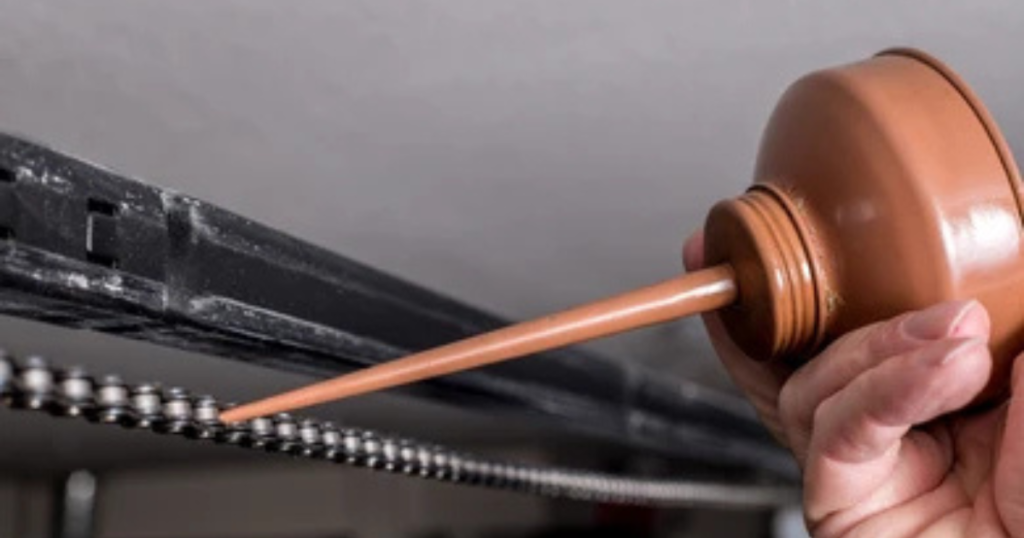Book expert garage door spring replacement service with our reliable Palm Beach, FL team. Fast and efficient for long-lasting garage door performance.
Garage door springs are critical to the function of a garage door, bearing the load and enabling smooth and efficient movement. Given their essential role, garage door springs face significant wear and tear over time, leading to inevitable repair and replacement needs. Whether you’re dealing with torsion or extension springs, understanding their life cycle, knowing how to maintain them, and recognizing when it’s time for replacement can keep your garage door functioning safely and efficiently.
This comprehensive guide covers the life cycle of garage door springs, factors affecting their lifespan, maintenance practices, and the steps to safely replace them when necessary. This information lets homeowners ensure their new garage doors remain safe, reliable, and energy-efficient.
Garage Door Spring Life Cycle: Repair, Maintenance, and Replacement Guide
Garage door springs operate under high tension and counterbalance the door’s weight. Each time the door opens or closes, the springs complete a cycle, winding and unwinding as they work. This repetitive action wears down the springs over time, eventually requiring maintenance, repair, or replacement. Understanding the full life cycle of garage door springs is essential to recognizing signs of wear, practicing proactive maintenance, and timing replacement effectively.
- Repair Needs: Common signs of spring damage include a door that’s difficult to lift, makes unusual noises, or feels uneven as it moves. Minor repairs like adjustments or cable replacements can often address these issues.
- Maintenance Requirements: Regular maintenance can extend the life of garage door springs by keeping them lubricated and balanced. Inspections should occur every few months, especially if the door is used multiple times daily.
- Replacement Timeline: Most garage door springs are designed to last approximately 10,000 cycles, translating to about 7 to 10 years of average use. However, heavy usage, extreme weather, and lack of maintenance can reduce this lifespan.
Understanding the life cycle of garage door springs allows homeowners to plan for maintenance and replacement before they completely fail, ensuring the door operates reliably and safely.
Types of Garage Door Springs
There are two main types of garage door springs: extension springs and torsion springs. Each type has a distinct design and functional purpose, which determines how it bears the load of the garage door.
Extension Springs vs. Torsion Springs
Extension Springs: These springs are typically located on each side of the garage door and stretch to counterbalance the door’s weight. Extension springs are the older of the two types and are often used in residential garages with lighter doors.
- Pros: Extension springs are generally less expensive and easier to install.
- Cons: They wear out faster than torsion springs due to the constant stretching and can pose more safety risks if they snap.
Torsion Springs: Positioned above the door, torsion springs use a twisting motion to bear the load. These springs are generally more durable and better suited for larger or heavier doors, as they evenly distribute tension.
- Pros: Torsion springs are more durable, have a longer lifespan, and operate smoothly.
- Cons: They are more expensive and require professional expertise for installation and replacement due to the high tension involved.
Choosing between extension and torsion springs often depends on the door’s weight, frequency of use, and budget. Torsion springs are generally recommended for durability and reliability, especially for heavier or frequently used doors.
Life Cycle of a Garage Door Spring
The life cycle of a garage door spring is measured in cycles, with one cycle representing a full opening and closing of the door. Most springs are rated for 10,000 cycles, though heavy-duty options rated for 20,000 or even 50,000 cycles are available for high-usage doors. The life cycle is influenced by various factors that affect durability and performance.
Factors Affecting Spring Lifespan
Several elements can impact the lifespan of garage door springs:
- Frequency of Use: Springs used multiple times a day wear out faster than those used less frequently. Investing in higher cycle-rated springs is beneficial for homes with high garage door usage.
- Climate and Weather: Extreme temperatures, humidity, and exposure to moisture can accelerate spring deterioration. Rust from humidity weakens the metal, shortening the spring’s life.
- Door Weight: Heavy doors require more spring tension, resulting in quicker wear. A door that’s too heavy for its springs may require heavier-duty or additional springs to balance the load.
- Maintenance Practices: Regular lubrication, tension adjustments, and inspections can extend the life of garage door springs by reducing friction and balancing the load distribution.
Understanding these factors enables homeowners to take preventative measures and practice regular maintenance, prolonging the life of their springs and reducing the likelihood of sudden failure.

Garage Door Spring Maintenance
Regular maintenance is essential to keep garage door springs operating safely and effectively. Proactive maintenance practices help reduce wear, prevent damage, and extend the springs’ lifespan.
Lubrication and Regular Check-ups
Lubricating garage door springs is one of the simplest yet most effective ways to maintain them. Lubrication reduces friction between the coils, making the springs last longer and preventing them from binding.
Lubrication Tips:
- Type of Lubricant: Use a silicone-based or lithium-based spray lubricant specifically designed for metal parts. Avoid using WD-40, as it’s a degreaser and does not provide long-term lubrication.
- Frequency: Apply lubricant to the springs every 3 to 4 months. In humid climates, consider applying it more frequently to prevent rust.
- Application Process: Spray lubricant along the entire length of the springs, ensuring even coverage. After applying, open and close the door a few times to distribute the lubricant evenly.
Regular Check-ups:
- Inspect for Wear and Rust: Visually inspect the springs for any signs of rust, corrosion, or visible gaps between the coils, which could indicate weakness.
- Check Spring Balance: Disconnect the garage door opener and manually lift the door halfway. If it stays in place, the springs are balanced. If it moves up or down, the springs may need adjustment.
- Test for Smooth Operation: Listen for grinding or squeaking noises when the door is in motion. These sounds can indicate friction, misalignment, or worn springs.
Regular maintenance keeps springs in optimal condition and can prevent the need for early replacement, saving on repair costs in the long run.
Garage Door Spring Replacement
Due to the high tension involved, replacing garage door springs is a complex and potentially dangerous task. Recognizing when it’s time for replacement and understanding the process is crucial for a safe and effective installation.
When and How to Replace Your Springs
Knowing when to replace garage door springs is essential for maintaining a safe and efficient garage door system. Signs that indicate it may be time to replace the springs include:
- Difficulty Opening or Closing the Door: If the door becomes heavy or challenging to lift, it may signal that the springs have lost their tension.
- Loud Noises During Operation: Grinding or banging sounds may indicate that the springs are wearing out or misaligned.
- Visible Gaps in the Spring: Springs in good condition should appear as continuous coils without gaps. Gaps indicate a break in the coil, meaning the spring can no longer effectively bear the load.
Steps to Replace Garage Door Springs:
- Secure the Door: Ensure the door is in the down position and secure it with clamps or locking pliers to prevent movement.
- Disconnect the Opener: Unplug and detach the opener to avoid any accidental activation.
- Release the Spring Tension: Using winding bars, carefully release the tension from the springs, alternating turns to maintain control.
- Remove the Old Springs: Unscrew and remove the old springs from the torsion bar.
- Install the New Springs: Slide the new springs onto the torsion bar and secure them in place with bolts.
- Tension the New Springs: Use winding bars to add tension to the springs based on manufacturer guidelines.
- Test the Door: Remove clamps, reconnect the opener, and test the door to ensure smooth operation and proper balance.
Replacing springs is complex and requires precision. If in doubt, hiring a professional is always safer, especially if you lack experience with high-tension components.
Why Professional Repair May Be the Best Option
Replacing garage door springs can be challenging and involves safety risks, especially for inexperienced with high-tension components. Here are reasons why hiring a professional may be the best choice:
- Safety: Springs under high tension can cause severe injury if handled incorrectly. Professionals have the training and equipment to replace springs safely.
- Quality Assurance: Professional installation ensures springs are properly balanced, tensioned, and aligned for smooth operation, reducing wear on other components.
- Warranty: Many professionals offer a warranty on parts and labor, providing added security and peace of mind.
Hiring a professional for homeowners unfamiliar with garage door repairs minimizes risks and ensures that the job is done correctly.

FAQs on Garage Door Spring Replacement
Can I drive to the garage with a broken spring?
While you can drive up to the garage, operating the door with a broken spring is not advisable. Attempting to open or close it can cause further damage to the door system or pose safety risks.
Should I replace both garage door springs at the same time?
Yes, it’s recommended that both springs be replaced simultaneously. Springs installed together wear down at the same rate, so if one fails, the other is likely close to breaking as well. Replacing both keeps the door balanced and running smoothly.
How many years do garage door springs last?
Garage door springs last 7 to 12 years with regular use and maintenance. Heavy usage may reduce their lifespan, but routine lubrication and care help them reach their full expected life.
How to tell if a garage door spring is broken?
Signs of a broken spring include difficulty lifting the door, uneven movement, and a loud bang when the spring breaks. The door may not open fully or may appear crooked. Checking regularly can help spot wear early.
Are there different types of garage door springs?
Yes, there are two main types: torsion springs, which sit above the door and twist to lift, and extension springs, which stretch along the sides. Each type is suited to different door sizes and weights, so choosing the right one is crucial.
To Wrap Up
Garage door spring replacement is a vital aspect of garage door maintenance, impacting safety, functionality, and the overall lifespan of the door system. Understanding the types of springs, their life cycle, and the maintenance steps can help homeowners make informed decisions about garage door repair, replacement, and professional services.
Whether you opt for DIY maintenance or professional help, regular care and timely replacement of garage door springs ensure that your garage door operates smoothly, safely, and efficiently. With a reliable spring system, your garage door will continue to serve as a functional and secure entry point for years.
End Note
At Rocket Garage Doors, we understand that garage door spring replacement requires precision and attention to safety. Our skilled technicians are equipped to handle any spring replacement job, ensuring your garage door operates smoothly and safely. If you’re dealing with a broken or worn-out spring, trust our experts to provide reliable solutions tailored to your needs.
Our comprehensive services cover all aspects of garage door care. We’re dedicated to keeping your garage door in shape, from repair and maintenance to on-site structural reinforcement. We specialize in aluminum craftsmanship and custom design, allowing us to offer unique solutions that fit seamlessly into your residential or commercial setup.
If you want more information, explore our services, or check out our blog for valuable insights. We also provide emergency response, so we’re here whenever you need us. Visit us at rocketgaragedoors.com or learn more about our residential and commercial options. Contact us here.


